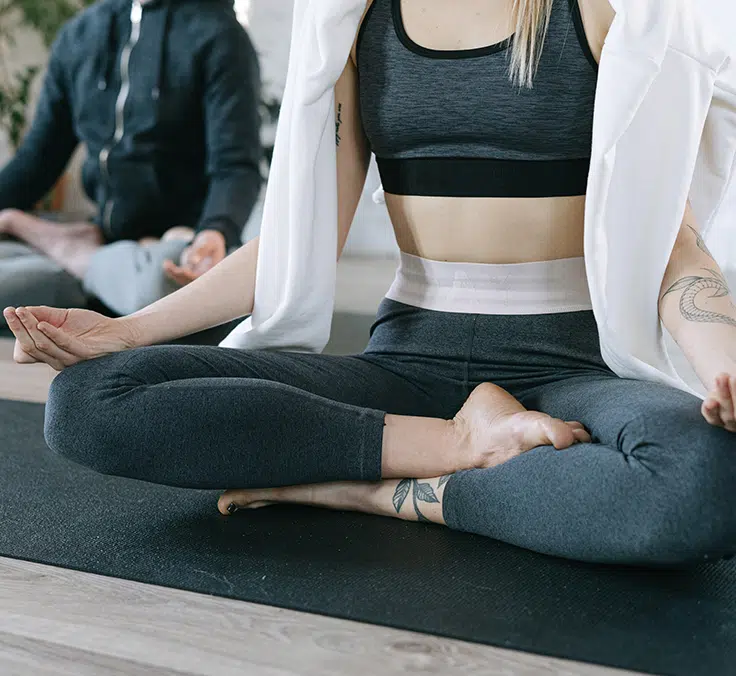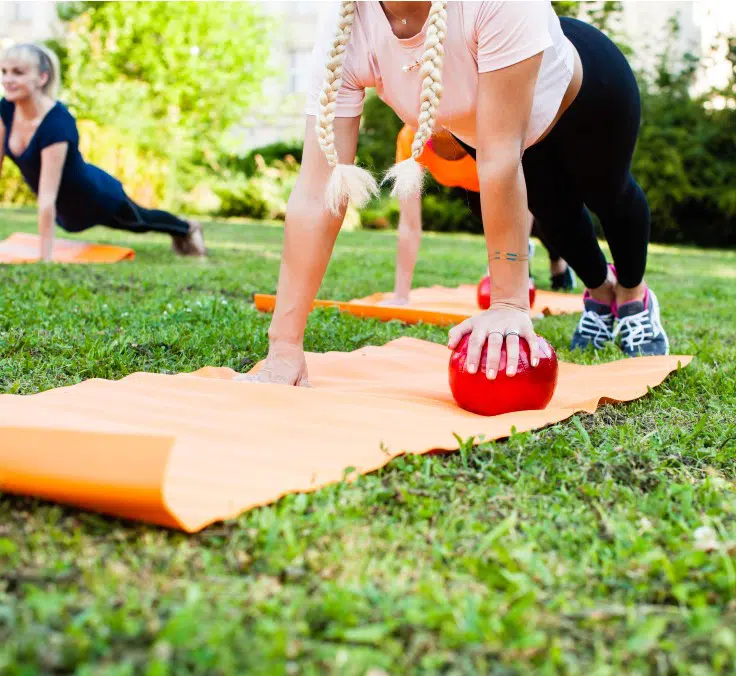How do we set exercise objectives?
MAPFRE is stepping up to help you achieve all your fitness objectives. In this article we offer advice on how to prepare your workout plan and what you need to do to reach the finish line healthily.
Less than 40% of Americans engage in the recommended amount of physical activity, and about a quarter of all Americans don’t do any exercise at all. Given its multiple health benefits – reduced risk of dying from coronary heart disease and of developing high blood pressure, lower blood pressure in some people with hypertension, healthy bones, muscles, and joints, lower probability of suffering from anxiety and/or depression, improved mood and feelings of well-being and better weight control – regular exercise should be part of everyone’s daily routine. But sometimes we feel stuck, like we’re not making any progress, and we don’t notice any physical progress. So how can you establish workout objectives that work for you?
All exercise needs a purpose, a goal. Whether it’s yoga, strength training, running, dance, or any other sport, you need to set an objective that you can accomplish over time. Here’s how to do it.
Plan your workouts
- Schedule the days of the week that you’ll exercise
How many times a week you can exercise depends on your fitness level, your age, and the estimated date by which you would like to reach your objectives.
Playing sports should be a time for you to disconnect, so it’s best to set aside enough time to enjoy your workout.
- Set small daily objectives
Once you know which days and times you plan to work out on, decide which exercise routines you’ll do each day, how many repetitions of each set, and the intensity or weight you’ll use, depending on the sport.
- Check your condition
At the end of your workout sessions, be real with yourself and adjust your planning according to your physical capabilities. You can’t expect to reach your objective in just one week, so be realistic with your tempo.
Later on, we’ll tell you about why you shouldn’t over-exert yourself, avoiding serious injury being one reason.
- Prepare your materials
If your exercise routines require additional equipment, such as weights, balls, pulleys, or any other type of accessory, we recommend having them at hand before starting your workout. This way you’ll have everything you need and you’ll only have to worry about performing the exercises correctly.
Pacing your workouts
- Consult a certified professional
We recommend that you get professional sports advice before you start your new exercise routine. A professional can help you split up your workouts for a balanced approach to avoid injuries and will also teach you how to perform the exercises correctly and optimally to maximize results.
- Seek medical attention, if necessary
If you feel discomfort or pain during a workout, you should stop and seek treatment so that the injury doesn’t get worse. Taking care of yourself also means seeing certified professionals such as physiotherapists, osteopaths, or massage therapists, among others, who can contribute to your physical well-being so that you make it your next training session in perfect condition.
Combine sports
The Latin expression Mens sana in corpore sano refers to general well-being that accounts for physical and mental fitness. A good idea is to combine your workouts with other mental relaxation exercises such as mindfulness, yoga, or Tai chi, to name a few.
Healthy diet
- Follow a healthy diet
Accompany your exercises with a balanced and healthy diet. Eating well before and after your workout is essential to stay healthy and avoid injury. In another article, we lay out some sports nutrition guidelines that’ll help you in your day-to-day life, as well as on the way to achieving all your wellness goals.
There are some harmful myths about food to be aware of. For example, not all fats are bad. There are healthy fats that provide essential benefits to our health: they help absorb the fat-soluble vitamins A, D, E, and K, which play a key role in the correct functioning of hormones and certain cells.
Some foods that contain healthy fats are olive oil, avocado, almonds, hazelnuts, cashews, and oily fish. Meanwhile, we should avoid highly processed pastries and ice cream, cookies, and fried foods.
We recommend that you get nutritional advice on the foods that are right for you and your workout routine, so that you can continue to make progress and achieve your wellness objectives.
- Stay hydrated
Good hydration is essential for your body, as water regulates your body temperature, facilitates some of the most important chemical reactions, and helps to digest and assimilate nutrients from your food.
It’s important to stay hydrated when exercising, not only in summer, but all year round, to avoid getting dehydrated from your physical exertion. Ideally, you should hydrate before, during, and after your workout.
In addition to drinking water, there are foods that also help to keep you hydrated, such as watermelon, apples, spinach, lettuce, kiwis, and grapes, among others. You can include them in your pre-workout and post-workout diet. These foods also offer other nutrients such as potassium, fiber, vitamin C, and many more.
If you want to achieve your exercise objectives, you need to plan your workouts correctly — progressively and having established which days you’re going to work out and which exercises you’re going to do — without forgetting that you have to adapt them to your physical condition so you don’t injure yourself. You can also combine your workouts with other more relaxing activities, such as mindfulness or yoga. And last but not least, do your best to maintain a balanced diet that incorporates healthy foods of all kinds.
RELATED ARTICLES:





